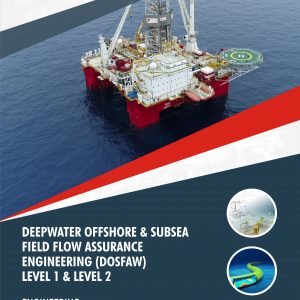Description
Computational Fluid Dynamics (CFD) is a branch of engineering that uses numerical analysis and algorithms to solve and analyze problems related to fluid flow. ANSYS Fluent is a widely-used CFD software that can simulate a range of fluid dynamics scenarios, including laminar and turbulent flows, heat transfer, combustion, and multiphase flows.
The ANSYS Fluent software uses a range of numerical methods to solve the Navier-Stokes equations, which describe the behavior of fluids. These methods include finite volume, finite element, and finite difference methods, which allow for the accurate simulation of complex fluid flows and heat transfer phenomena.
Some of the key features of ANSYS Fluent include:
- Pre-processing tools: ANSYS Fluent offers a range of pre-processing tools that allow users to create and mesh complex geometries, define boundary conditions, and specify material properties.
- Solver capabilities: The software offers a range of solver capabilities that can simulate fluid flow, heat transfer, and other related phenomena. These include steady-state and transient simulations, as well as turbulence modeling and multiphase flow simulations.
- Post-processing tools: ANSYS Fluent offers a range of post-processing tools that allow users to analyze and visualize simulation results. This includes tools for creating contour plots, vector plots, and animations, as well as tools for generating reports and presentations.
- Parallel processing: ANSYS Fluent can be run on multiple processors, allowing for faster simulations and larger models.
CFD with ANSYS Fluent is used in a range of industries, including aerospace, automotive, chemical, and energy. It allows engineers and designers to optimize designs, reduce costs, and improve performance by simulating fluid flow and heat transfer phenomena.
CFDMC Level 1 to Level 2 covers Fluid Dynamics, Use of CFD, Applications of CFD, CFD Working Mechanism, Modeling Governing Equation, Types of CFD Codes, CFD Algorithm, CFD Analysis using GAMBIT & FLUENT, Basic Steps of CFD Analysis, Defining Model Goals, Identify Domain you will Model, Designing and Creating the Grid, Setting Up Numerical Model, Computing the Solutions, Examining the Results, Tools to Examine the Result, Hands on Workshop on Laminar Fluid Flow in Pipeline with ANSYS FLUENT and more.
This course is designed to provide detailed knowledge of computational fluid dynamics and will assist those who are switching or enhancing there career in this sector.
Course Outlines
Fluid Dynamics
What is CFD
Why Use CFD
Applications of CFD
How CFD Works
Modeling Governing Equation
Types of CFD codes
CFD Algorithm
CFD Analysis using GAMBIT & FLUENT
Basic Steps of CFD Analysis
Define your Model Goals
Identify the Domain you will Model
Design and Create the Grid
Set Up Numerical Model
Compute the Solutions
Examine the Results
Tools to Examine the Result
Advantages of CFD
Limitations of CFD
Problem Definition
Activities:
Identify CFD Deliverables
Evaluate accuracy and cost requirements
Pre-Processing
Activities:
Identify CFD Domain
CAD model and Cleanup
Meshing
Solverf
Activities:
Setup material, model
Boundary, Initial Conditions
Solver setup
Convergence and Flow Monitors
Post Processing
Activities:
Examine results
Assessment
Participant underpinning knowledge of computational fluid dynamics will be accessed with short answer multiple-choice questionnaire and real time simulation using ANSYS Fluent for Laminar Fluid Flow in a pipeline at the conclusion of the course.
Outcome
Participants will gain an in debt understanding of computational fluid dynamics at beginners to intermediate level. In addition; be able to analyze complex problems involving fluid-fluid, fluid-solid or fluid-gas interaction.
Professional Certificate
Issued directly by Chess Subsea Engineering Europe.
How to Register
Click here to download registration booklet on msword and email completed booklet to info@chesssubseaengineering.org directly.










